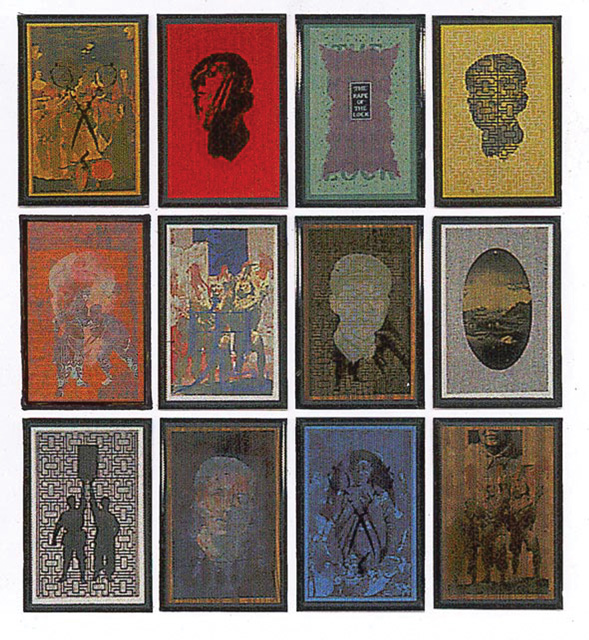


In The rape of the lock (1996), Neil Emmerson embraces a number of obsessions that have informed his work for many years: the oriental, the queer and the physical act of making art. The rape of the lock is simultaneously delicate and hard, humorous and dark, luminous and threatening.
Officially, there is no queer culture in China. Neil Emmerson had his doubts and set off to explore the underground of Chinese culture. The tradition of what Emmerson dubs 'love relations between men', he discovered, has a rich, but harshly censored history. 'For these men, remembering their own cultural history and access to awareness are vital issues in the face of an ignorant and persecuting government that tolerates the availability of sham miracle cures for AIDS,' Emmerson has written.1
But for all his anger—and The rape of the lock is an angry work—Emmerson has not lost his sense of humour. In this series of prints the artist playfully combines the formal communist iconography of government-authorised imagery with famous western images of decadence. In Emmerson's fantastical world, young Red Guards clasp J-K Huysmans' infamous A rebours (Against nature)—a nineteenth-century novel exploring the perverse obsessions of aesthete Des Esseintes—rather than Chairman Mao's communist manual, The little red book. Western aesthetes such Oscar Wilde and Aubrey Beardsley, once maligned but now lionised, become the authorised faces of Chinese communist culture.
Given the hidden nature of contemporary gay culture under the communist regime, Emmerson is hinting that 'unsayable' culture quite likely climbs to the highest echelons, just as official culture in the West has come to admire artists it once condemned.
Emmerson's work is also about process. The artist studied printmaking in Newcastle and Sydney during the early 1980s. In 1999 he took part in an artist-in-residence program in Japan to learn the techniques of traditional Japanese woodblock printing. Emmerson is intrigued with the physicality of printmaking and its variable textures and layerings, which echo his equally layered subject matter. Using a photo-lithographic technique, Emmerson pushes the boundaries of traditional printmaking to new extremes. Eschewing the traditional approach of singular images, Emmerson generates a series of interlocking works with multiple variants occurring within each image: a singular work formed from competing elements.
As writer–curator Ewen McDonald has stated:
Emmerson uses reprographic processes in combination with constructed forms to comment on socio-political issues ... Given the blurring between traditional notions of printmaking and the global dominance of print media today, Emmerson's use of "impressions" suggests a soft touch, but it comes with a stinging critique of contemporary superficiality ... he demands something more than a mere glossing over or scratching at, the surface of things.2
The humour in The rape of the lock does nothing to blunt Emmerson's message. Indeed, by overlaying Wilde and Beardley over Mao, hidden couplings cry out for tolerance and freedom.
- Ashley Crawford
Neil Emmerson is represented in Australia by William Mora Galleries, Melbourne.